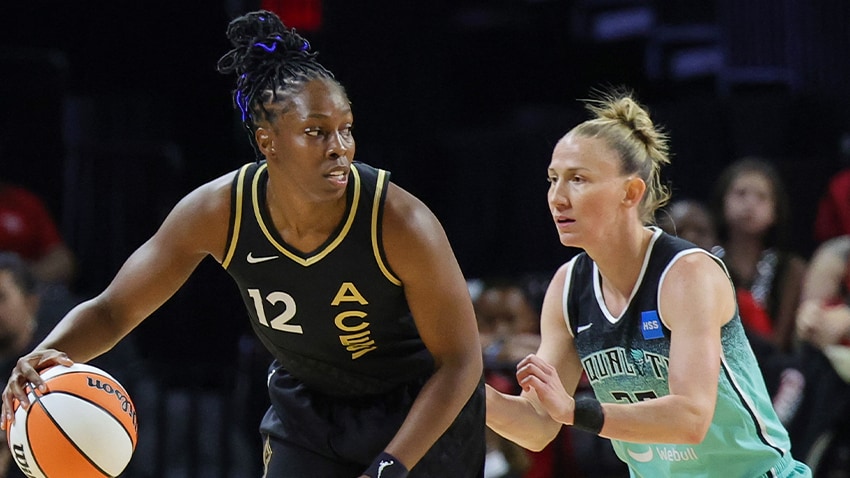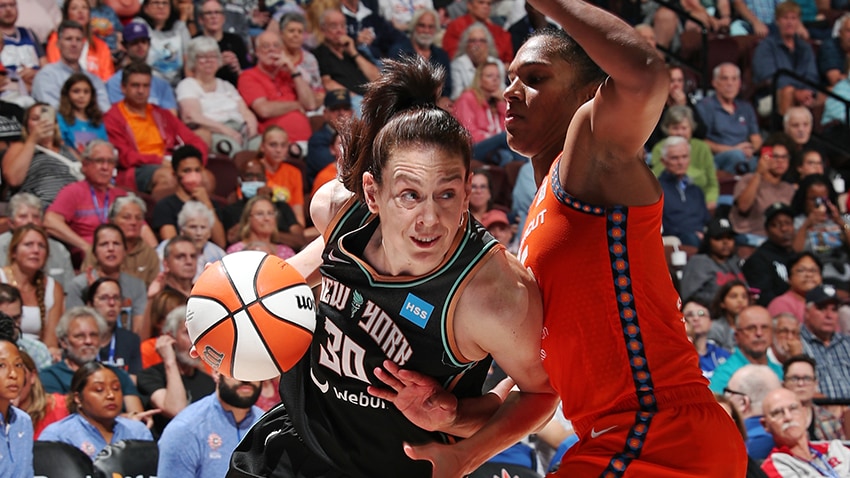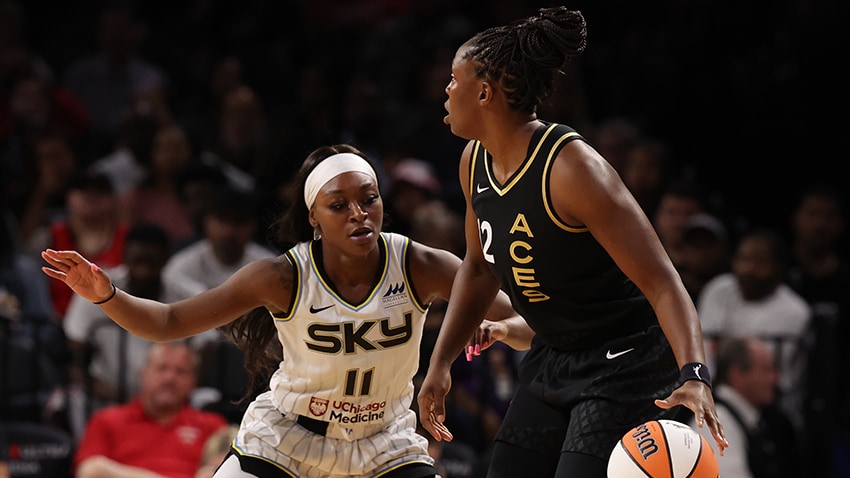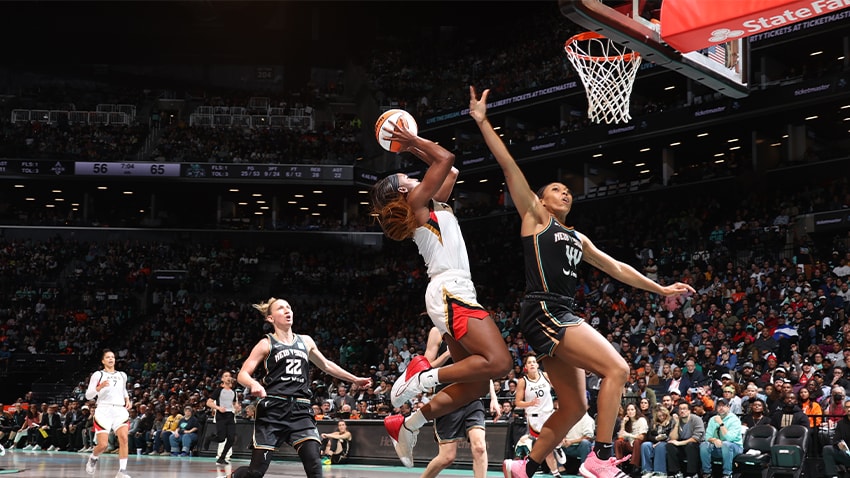X's & O's: How the Liberty Extended Their Season
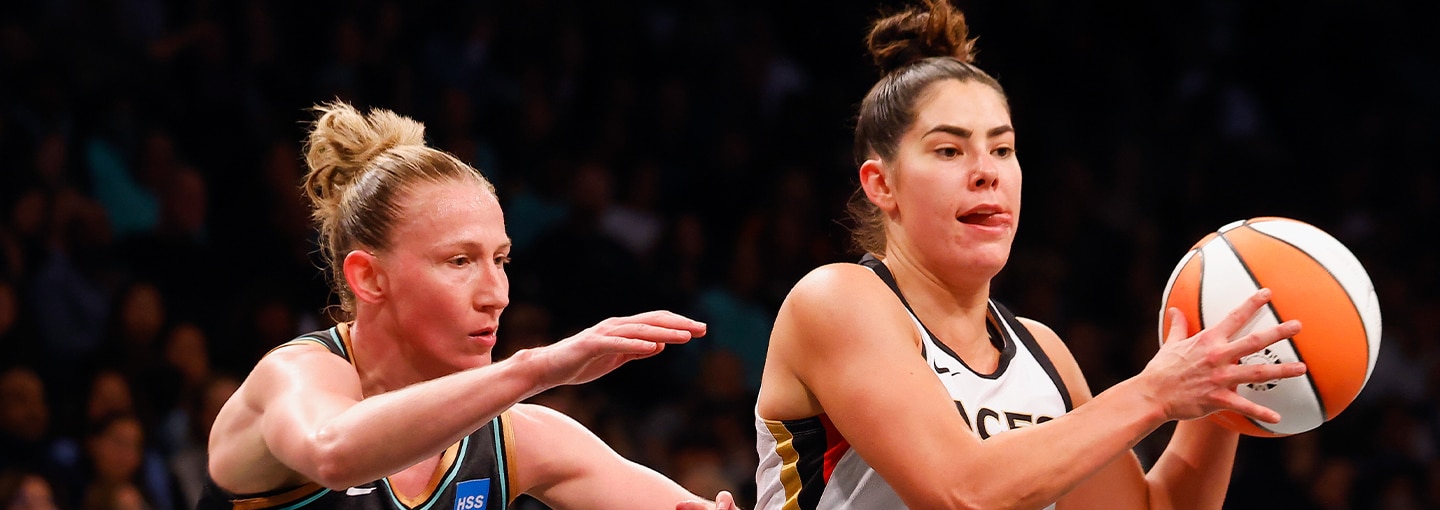
The Las Vegas Aces didn’t just take care of homecourt during the first two games of the Finals, they dominated the New York Liberty in the process. Their 104-76 victory in Game 2 doubled as their best offensive showing of the postseason – 1.35 points per possession, via PBP Stats – and easily their best showing against the Liberty all season.
The Aces guards looked comfortable. A’ja Wilson was operating in more space than she’d seen in the previous matchups against the Liberty. Add in poor shooting and, as Liberty head coach Sandy Brondello discussed after Game 2, questionable transition defense, and the Aces had all of the momentum heading into the potential close-out Game 3.
Not only did the Liberty return to form in their 87-73 Game 3 victory, they may have flipped the series on its head with some of the adjustments they made – especially on the defensive end. Complicating matters for the Aces is the apparent foot injury suffered by All-WNBA guard Chelsea Gray in the fourth quarter, whose status for Game 4 (or beyond) remains up in the air for now.
Even before Gray’s injury, the Aces struggled on the offensive end. The flow they established in the second half of Game 1 – and carried into their superb Game 2 showing – was nowhere to be found. Through three-quarters of Game 3, the Aces had 50 points while converting a ghastly 31.6% of their two-point shots (12-of-38) and 23.1% (3-of-13) of their threes.
FLIPPING THE MATCHUPS
Cross-matching isn’t a new phenomenon in basketball, and it surely isn’t new for the Aces-Liberty matchup. Throughout the regular season, the Liberty attempted to slow down the Aces’ historically great offense by slotting Betnijah Laney – a stellar on-ball defender and worthy All-Defensive team selection – on Gray.
In theory, placing the bigger, stronger Laney on Gray would limit the drives and occasional post-ups that Gray thrives on, thus helping the Liberty control the paint and keep the rest of the defense out of rotation. With Laney being comfortable defending bigger players in general, it would also allow the Liberty to switch pick-and-rolls between Gray and Wilson.
Keeping length on Gray (and Wilson) felt like the formula to limit the Aces’ offense. Statistically, it’s hard to argue with that; during the regular season meetings, the Aces posted an offensive rating of 103.1, nearly 10 points lower than their regular season average. Wilson in particular saw a drop-off in production, something we discussed in-depth in our Finals preview.
But with Laney on Gray, that left Courtney Vandersloot to defend Kelsey Plum, and Sabrina Ionescu to deal with Jackie Young. Through the first two games of the Finals, Young (25.0 points on 58.1% shooting overall) and Plum (24.5 points on 51.5% shooting overall) convincingly won their matchups. Young in particular played so well that the Liberty began tweaking the way they defended her. Instead of ducking under picks, daring Young to shoot from the outside, the Liberty were forced to defend more aggressively. Young began receiving a steady mixture of at-the-level coverage and blitzes in order to get the ball out of her hands.
In Game 3, the Liberty toggled their matchups again. This time, Laney got the Young matchup, Breanna Stewart was responsible for Gray, and Jonquel Jones got more reps against Wilson. Vandersloot stayed with Plum, which shifted Ionescu onto Aces big Kiah Stokes – or Sixth Player of the Year Alysha Clark when she subbed in.
It was a way for the Liberty to maintain their length-on-Gray ethos and make any potential Gray-Wilson pick-and-roll a switch, while also taking away the comfort that Young established in the first two games. Bigger picture, it allowed the Liberty to get back to shutting off the paint. The cross-matching made it harder for the Aces to get there, and the Liberty’s penchant for sending (late) help made it difficult for the Aces to score whenever they did get inside.
With the cross-matching, the Liberty made a calculated bet that Stokes wouldn’t be able to take advantage of the Ionescu matchup. Slotting Ionescu there took her away from the primary action, while also unlocking her as a help defender. On the rare occasions, the Aces tried to involve Stokes in a ball screen, Ionescu would hedge and retreat – selling out on the ball-handler while essentially daring the Aces to feed Stokes on the short roll.
The box score numbers speak for themselves: the Wilson-Gray-Young trio shot a combined 10-of-37 (27%) from the field in Game 3. Stokes didn’t attempt a shot in her 18 minutes of play despite having a perceived advantage down low.
Plum set her playoff career-high in points (29), doing her best to keep the Aces afloat. But that’s also part of the point: she was the only member of the Aces’ Core Four that could shake free. It would be silly to suggest the Liberty are okay with Plum mixing in drives, triples, and getting to the free throw line like she did. But they’ll take Plum’s production if the trade-off is stifling the production of the other co-stars.
There are counters the Aces flirted with in Game 3. They tapped into more staggers in an effort to bait the Liberty into unfavorable switches. Plum scores on the play below, but note that she was able to get Jones switched onto her – removing the Liberty’s most fearsome rim protector from the paint – while Wilson had Marine Johannes for most of the possession.
The Aces also experimented with using Gray as a screener in some of their half-court sets before flowing into what they wanted, but it’s unclear how often they’ll tap that button if Gray is unavailable.
If the Aces hope to close this series out, they’ll have to find a way to generate efficient offense in the half–court. They may not need to replicate their Game 2 performance, but it has to be better than what they showcased on Sunday.
WNBA reporter Nekias Duncan writes columns on WNBA.com throughout the season and can be reached on Twitter at @NekiasNBA. The views on this page do not necessarily reflect the views of the WNBA or its clubs.




